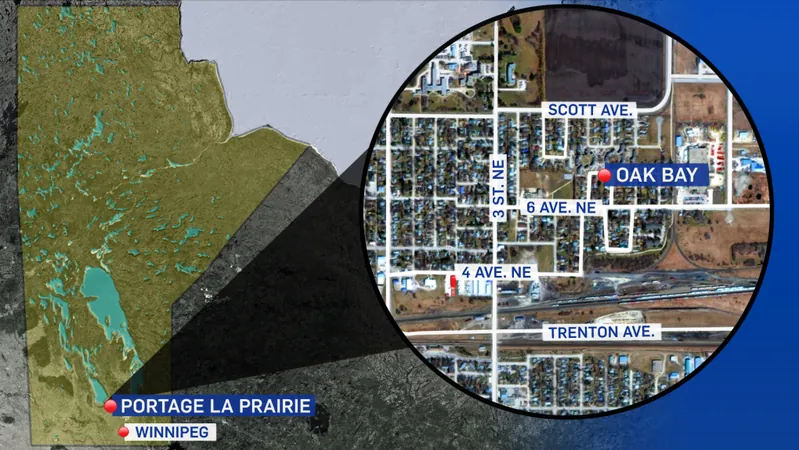
Ancient Tree Rings Uncover Evidence of a 'Cataclysmic' Solar Storm That Struck Earth 2,687 Years Ago
2024-12-04
Author: Noah
Understanding Ancient Solar Storms
Earth has always been subject to the whims of the sun, with periodic solar storms hitting our planet, creating stunning displays of auroras and occasionally wreaking havoc on modern technology. This year alone, powerful solar storms have triggered breathtaking auroras traveling deep into mid-latitudes, capturing the attention of skywatchers and scientists alike.
The Discovery of Miyake Events
But how do we understand the effects of solar storms that occurred long before the age of satellites and technology? Recent excavations and studies have provided clarity into one such awe-inspiring event that struck roughly 2,687 years ago. Thanks to the dedicated research by a team from the University of Arizona, led by Irina Panyushkina and Timothy Jull, ancient tree rings have unveiled secrets of monumental solar storms known as Miyake Events—extreme bursts of solar activity that have left a unique signature in Earth's natural history.
Identifying Rare Solar Activity
First identified in 2012 by Japanese physicist Fusa Miyake, these rare Miyake Events happen infrequently, with only six recorded instances in the past 14,500 years. The latest occurrence prior to this new finding was dated around 775 CE. However, the timing of an earlier event around 660 BCE had been an enigma—until now.
Potential Modern Impacts
Panyushkina emphasized the serious implications of such a solar storm today, stating, "If they happened today, they would have cataclysmic effects on communication technology."
Methodology of the Research
Researchers meticulously analyzed tree rings, discerning spikes in carbon-14, a radioactive isotope produced when cosmic rays interact with nitrogen in our atmosphere. This carbon-14 is absorbed by trees and becomes a part of their growth rings. The research team used wood samples from ancient trees buried in riverbanks and from archaeological sites, burning cellulose extracts to measure radiocarbon content accurately.
Cross-Referencing with Ice Core Data
When spikes in radiocarbon were detected, the researchers cross-referenced their findings with beryllium-10 isotopes, another indicator of solar activity collected from polar ice cores. "If both ice cores show a spike in beryllium-10 corresponding to increased radiocarbon in tree rings for the same year, we know a solar storm occurred," Panyushkina explained.
Success in Dating Miyake Events
Utilizing this method, they successfully identified the date of the previously elusive Miyake Event between 664 and 663 BCE. This newfound timeline may reshape our understanding of ancient solar activity and its potential impact on the Earth's environment and civilizations of the time.
Publication and Implications
The study has been published in the journal *Communications Earth & Environment*, further solidifying the importance of ancient nature in revealing historical cosmic events.
Looking Ahead
As our reliance on technology grows, scientists like Panyushkina and her team remind us of the profound lessons these ancient records hold. Understanding past solar storms not only enriches our historical knowledge but also equips us to better prepare for potential future solar threats. What further mysteries will the seasoned rings of ancient trees unveil? Stay tuned!









 Brasil (PT)
Brasil (PT)
 Canada (EN)
Canada (EN)
 Chile (ES)
Chile (ES)
 España (ES)
España (ES)
 France (FR)
France (FR)
 Hong Kong (EN)
Hong Kong (EN)
 Italia (IT)
Italia (IT)
 日本 (JA)
日本 (JA)
 Magyarország (HU)
Magyarország (HU)
 Norge (NO)
Norge (NO)
 Polska (PL)
Polska (PL)
 Schweiz (DE)
Schweiz (DE)
 Singapore (EN)
Singapore (EN)
 Sverige (SV)
Sverige (SV)
 Suomi (FI)
Suomi (FI)
 Türkiye (TR)
Türkiye (TR)